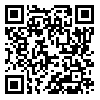2- Research Center of the Faculty of Medicine, Naresuan University, Phitsanulok, 65000, Thailand
Background & Objective: We wanted to see how fourth-year medical students felt about a new teaching approach we created—combining flipped classroom and case-based learning with a focus on student well-being through the PERMA model.
Materials & Methods: Twenty-two fourth-year medical students participated in our study between June 1, 2023, to April 30, 2024. Here's how it worked: students first watched instructional videos at home over two weeks. When they came to class, they took a quick quiz, then dove into discussing case study videos using the PERMA framework. We asked students to share their thoughts right after the session and again a month later to see how their perspectives held up over time.
Results: About one-third of our participants were male (7 out of 22), with an average age of 23. Students scored well on both the pre-test (8.18 out of 10) and post-test (8.77 out of 10), though the improvement wasn't statistically significant. The good news? Students were highly satisfied with the experience, and their enthusiasm didn't fade—their satisfaction scores remained consistently high both immediately after and a month later (4.41 vs 4.55 out of 5 for knowledge comprehension and around 4.00 for overall satisfaction). We saw small improvements in self-directed learning, memory, critical thinking, teamwork, and patient management skills, though learning motivation stayed about the same. Interestingly, students felt more confident using their knowledge and assessing lung sounds as time went on. Video engagement remained high, and stress levels didn't increase—which was encouraging.
Conclusion: Our pilot study shows that medical students really engaged with and appreciated this PERMA-based flipped classroom approach. While we didn't see dramatic jumps in test scores or other measured outcomes, students clearly found the method valuable and feasible. These findings provide valuable preliminary insights and will inform the design of a larger, more comprehensive study to evaluate the approach’s full education impact.
Received: 2025/08/4 | Accepted: 2025/11/16
| Rights and permissions | |
 |
This work is licensed under a Creative Commons Attribution-NonCommercial 4.0 International License. |



